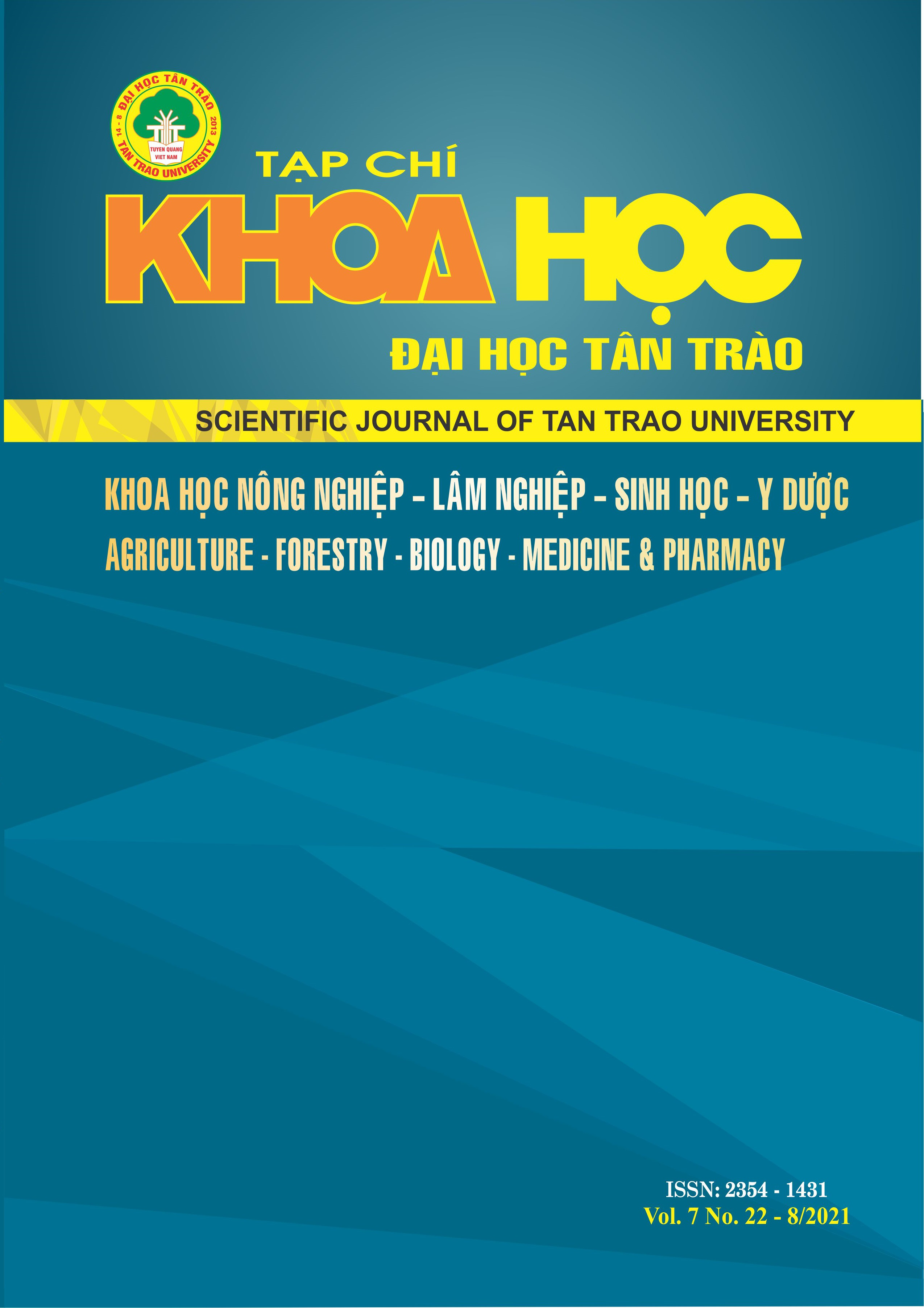STUDY ON THE PROCESS OF TEA BAGS LEAVES MYXOPYRUM SMILACIFOLIUM (WALL.) BLUME THAI NGUYEN PROVINCE
DOI:
https://doi.org/10.51453/2354-1431/2021/577Keywords:
Processing; procedure;Myxopyrum smilacifolium leaves; tea bag; parameters.Abstract
Myxopyrum smilacifolium (Wall.) Blume has left are astringent, acrid, sweet, heat-generating, pain relief, allergies, cooling, and tonic ... Currently, the main parts used are stem and root. Therefore, the research on tea bags made from its leaves has scientific and practical significance. The study showed that the leaves were with moisture of 69.95%, 2.15% ash, and 1.25% tannin. The process of teabags from Thai Nguyen’s Myxopyrum smilacifolium (Wall.) Blume leaves required: The temperature for leaf drying is 70ºC, crushing materials in size 1mm <d ≤ 3 mm. To create products with better sensory quality, stevia, passionflower, and artemisia are supplemented at 5%, 10%, and 8%, respectively. Products for aerobic microorganisms 6.3x10⁴ bacteria/g, yeasts - molds 1.5x103 colonies /g qualified as TCVN 7975 - 2008 for herbal tea bags.
Downloads
References
[1] Gopalakrishnan, S., Rajameena, R. (2013). GC- MS analysis of some bioactive constituents of the leaves of Myxopyrum serratulum A.W.Hill. International Journal of Advanced Research, 06:30-35.
[2] Madaleno, I. M. (2015). Traditional Medicinal Knowledge in India and Malaysia. Pharmacognosy Communications, 5(2):116-129.
[3] Maruthamuthu, V., Kandasamy, R. (2016). Phytochemical screening of secondary metabolites from Myxopyrum serratulum A.W.Hill by GC-MS, HPTLC analysis. International Research Journal of Pharmacy, 7(6):51-57.
[4] Siju, E. N., Samu, J., Minil, M., Rajalakshmi, G. R. (2017). Adaptogenic active component from Myxopyrum smilacifolium. International Journal of Current Pharmaceutical Research, 9(1):110-113.
[5] Ha, D. T. (2009). Food chemistry analysis. Science and Technology Publishing House, Hanoi. Vietnam.
[6] Thu, V. T. (2001). The chemical compounds in tea and some common analytical methods in tea production in Vietnam. Agriculture Publishing House, Vietnam.
[7] Hoang, V. C. (1999). Drying technique. Science and Technology Publishing House, Hanoi, Vietnam
Downloads
Published
How to Cite
Issue
Section
License

This work is licensed under a Creative Commons Attribution-ShareAlike 4.0 International License.
All articles published in SJTTU are licensed under a Creative Commons Attribution-ShareAlike 4.0 International (CC BY-SA) license. This means anyone is free to copy, transform, or redistribute articles for any lawful purpose in any medium, provided they give appropriate attribution to the original author(s) and SJTTU, link to the license, indicate if changes were made, and redistribute any derivative work under the same license.
Copyright on articles is retained by the respective author(s), without restrictions. A non-exclusive license is granted to SJTTU to publish the article and identify itself as its original publisher, along with the commercial right to include the article in a hardcopy issue for sale to libraries and individuals.
Although the conditions of the CC BY-SA license don't apply to authors (as the copyright holder of your article, you have no restrictions on your rights), by submitting to SJTTU, authors recognize the rights of readers, and must grant any third party the right to use their article to the extent provided by the license.


